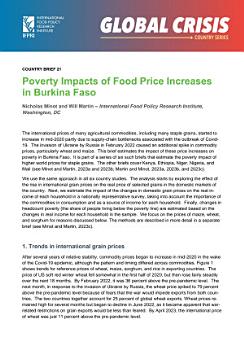Poverty impacts of food price increases in Burkina Faso
About this ebook
We use the same approach in all six country studies. The analysis starts by exploring the effect of the rise in international grain prices on the real price of selected grains in the domestic markets of the country. Next, we estimate the impact of the changes in domestic grain prices on the real income of each household in a nationally representative survey, taking into account the importance of the commodities in consumption and as a source of income for each household. Finally, changes in headcount poverty (the share of people living below the poverty line) are estimated based on the changes in real income for each household in the sample. We focus on the prices of maize, wheat, and sorghum for reasons discussed below. The methods are described in more detail in a method brief.
Ratings and reviews
- Flag inappropriate
- Flag inappropriate





